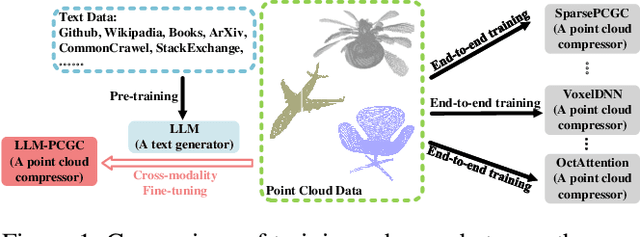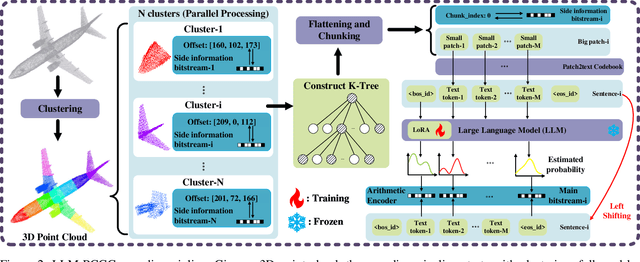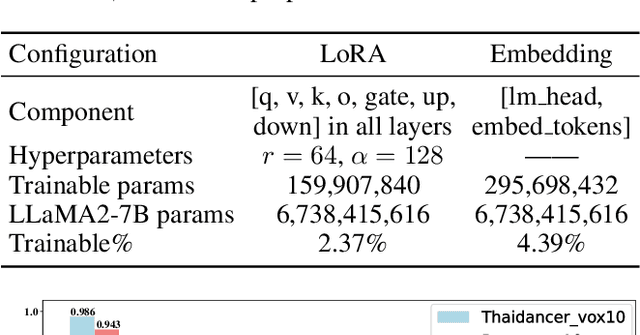LLM-PCGC: Large Language Model-based Point Cloud Geometry Compression
Paper and Code
Aug 16, 2024



The key to effective point cloud compression is to obtain a robust context model consistent with complex 3D data structures. Recently, the advancement of large language models (LLMs) has highlighted their capabilities not only as powerful generators for in-context learning and generation but also as effective compressors. These dual attributes of LLMs make them particularly well-suited to meet the demands of data compression. Therefore, this paper explores the potential of using LLM for compression tasks, focusing on lossless point cloud geometry compression (PCGC) experiments. However, applying LLM directly to PCGC tasks presents some significant challenges, i.e., LLM does not understand the structure of the point cloud well, and it is a difficult task to fill the gap between text and point cloud through text description, especially for large complicated and small shapeless point clouds. To address these problems, we introduce a novel architecture, namely the Large Language Model-based Point Cloud Geometry Compression (LLM-PCGC) method, using LLM to compress point cloud geometry information without any text description or aligning operation. By utilizing different adaptation techniques for cross-modality representation alignment and semantic consistency, including clustering, K-tree, token mapping invariance, and Low Rank Adaptation (LoRA), the proposed method can translate LLM to a compressor/generator for point cloud. To the best of our knowledge, this is the first structure to employ LLM as a compressor for point cloud data. Experiments demonstrate that the LLM-PCGC outperforms the other existing methods significantly, by achieving -40.213% bit rate reduction compared to the reference software of MPEG Geometry-based Point Cloud Compression (G-PCC) standard, and by achieving -2.267% bit rate reduction compared to the state-of-the-art learning-based method.
 Add to Chrome
Add to Chrome Add to Firefox
Add to Firefox Add to Edge
Add to Edge